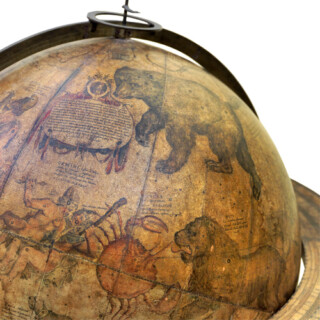Arrowsmith’s monumental maps of the world and four continents
[World and four Continents]
Map of the World in a globular projection exhibiting Particularly the Nautical Researches of Cap[tai]n James Cook... [and] Map of America by A. Arrowsmith... [and] Africa To the Committee and Members of the British Association... [and] Asia To Major James Rennell... [and] Map of Europe drawn from all the best Surveys...
London,
A. Arrowsmith, No.10 Soho Square,
4th September, 1804.
Set of five engraved maps, the maps of the continents each on four sheets, the map of the world on six, all with fine original outline hand-colour.
(World) 1000 by 1865mm (39.25 by 73.5 inches); (America) 1220 by 1500mm (48 by 59 inches); (Africa) 1260 by 1460mm (49.5 by 57.5 inches); (Asia) 1260 by 1460mm (49.5 by 57.5 inches); (Europe) 1260 by 1460mm (49.5 by 57.5 inches).
1203
notes:
A fine set of Arrowsmith's wall maps of the world and the four continents.
The maps are typical of Arrowsmith's work. All accumulated myth, misconception, and guesswork are stripped away making for a sparse and elegant style with decorative flourishes left for the borders. The maps also highlight Arrowsmith's use of the most up-to-date information, from the inclusion of Earl Macartney's voyage to China in 1793, and notes from Bruce's 'Travels to Discover the Sour...
The maps are typical of Arrowsmith's work. All accumulated myth, misconception, and guesswork are stripped away making for a sparse and elegant style with decorative flourishes left for the borders. The maps also highlight Arrowsmith's use of the most up-to-date information, from the inclusion of Earl Macartney's voyage to China in 1793, and notes from Bruce's 'Travels to Discover the Sour...
bibliography:
provenance:







![ARROWSMITH, Aaron [World and four Continents]](https://i0.wp.com/crouchrarebooks.com/wp-content/uploads/2025/03/1203_1H.jpg?fit=1700%2C966&ssl=1)
![ARROWSMITH, Aaron [World and four Continents]](https://i0.wp.com/crouchrarebooks.com/wp-content/uploads/2025/03/1203_2H.jpg?fit=1700%2C1374&ssl=1)
![ARROWSMITH, Aaron [World and four Continents]](https://i0.wp.com/crouchrarebooks.com/wp-content/uploads/2025/03/1203_3H.jpg?fit=1700%2C1376&ssl=1)
![ARROWSMITH, Aaron [World and four Continents]](https://i0.wp.com/crouchrarebooks.com/wp-content/uploads/2025/03/1203_4H.jpg?fit=1700%2C1380&ssl=1)
![ARROWSMITH, Aaron [World and four Continents]](https://i0.wp.com/crouchrarebooks.com/wp-content/uploads/2025/03/1203_5H.jpg?fit=1700%2C1385&ssl=1)
